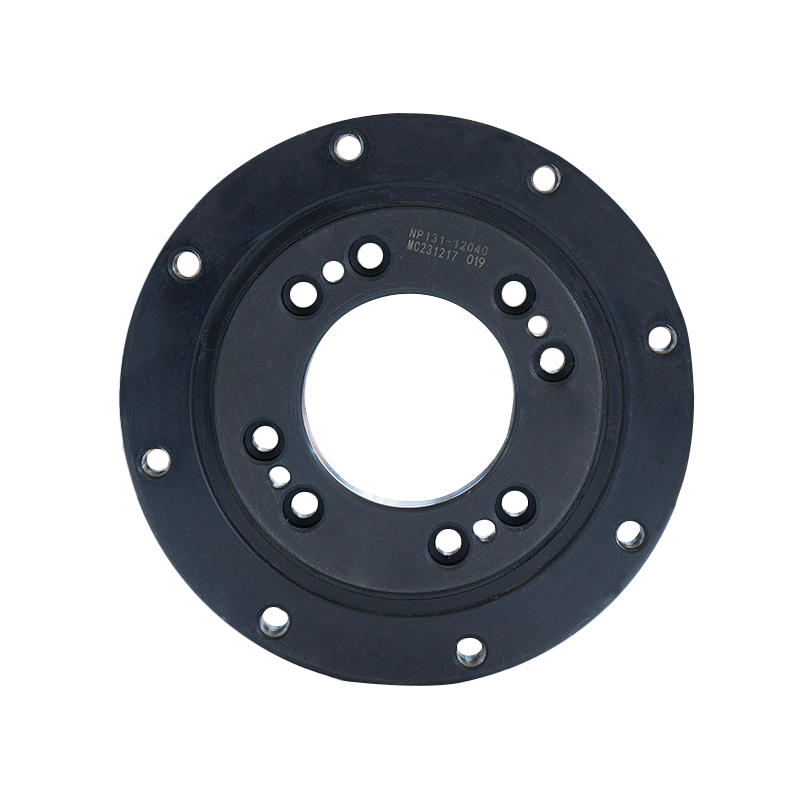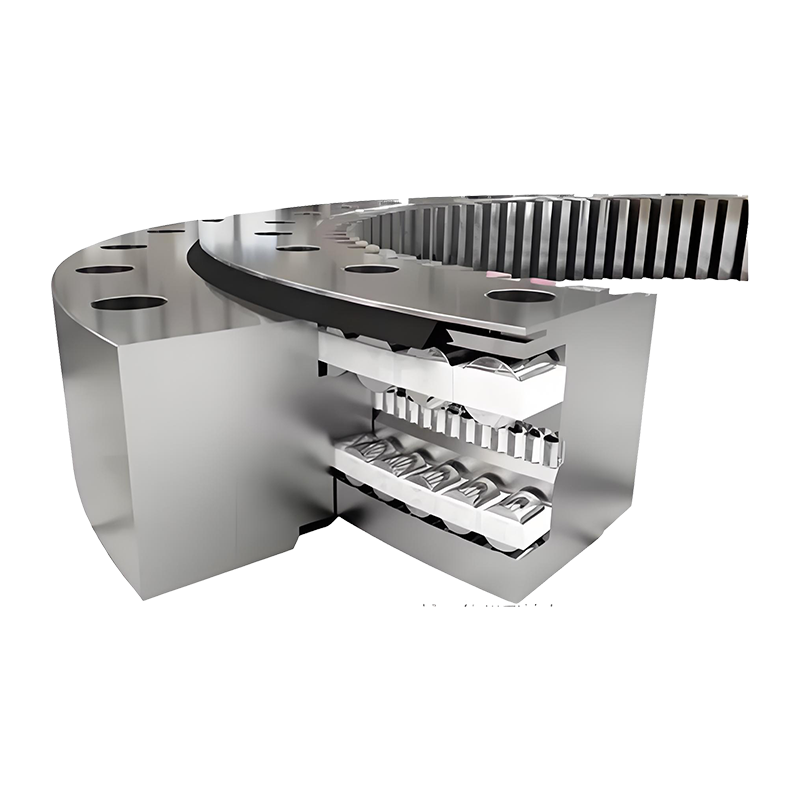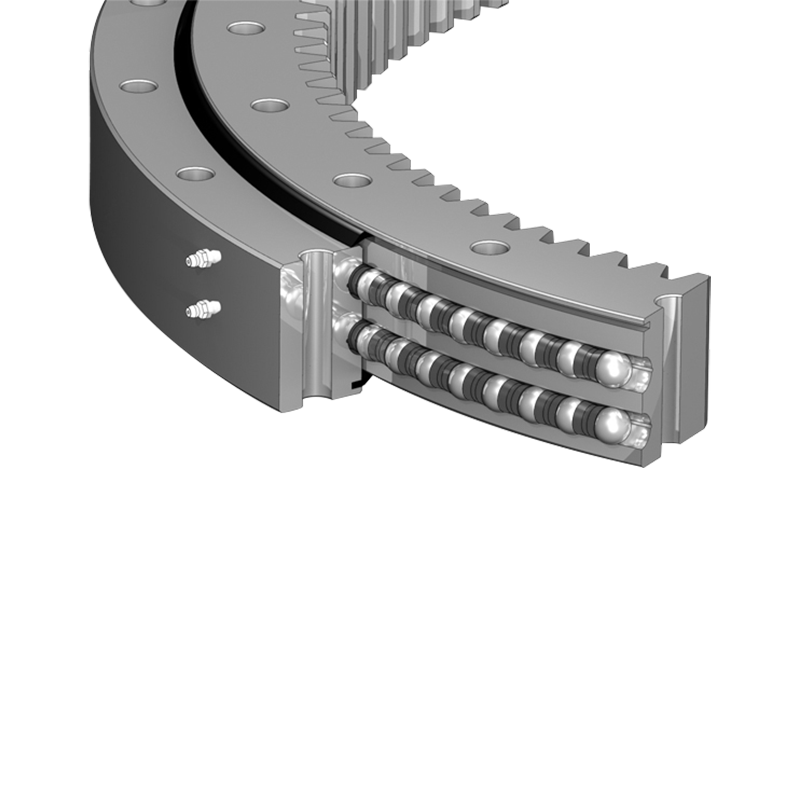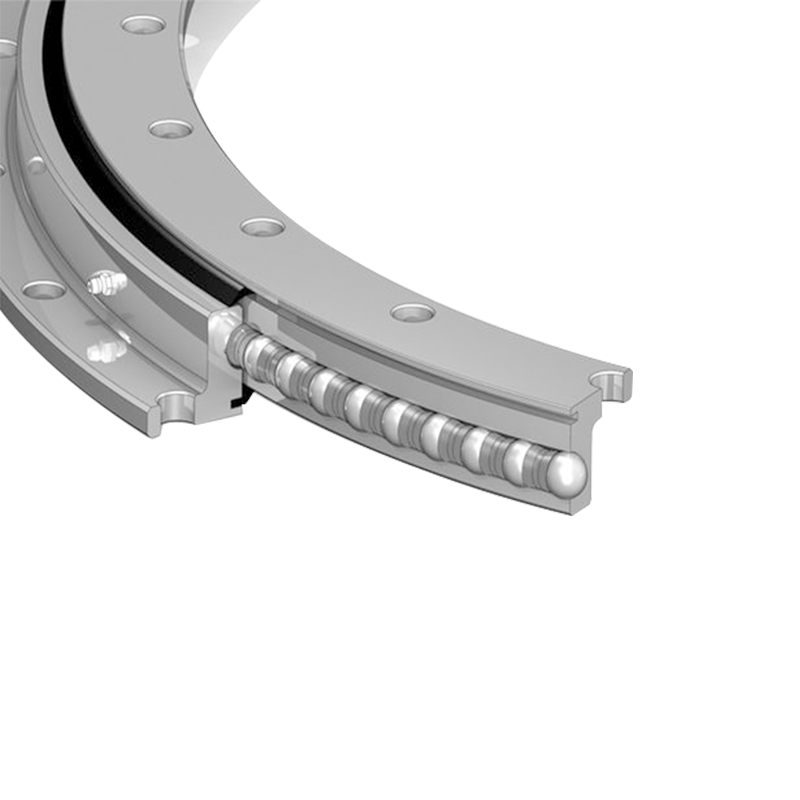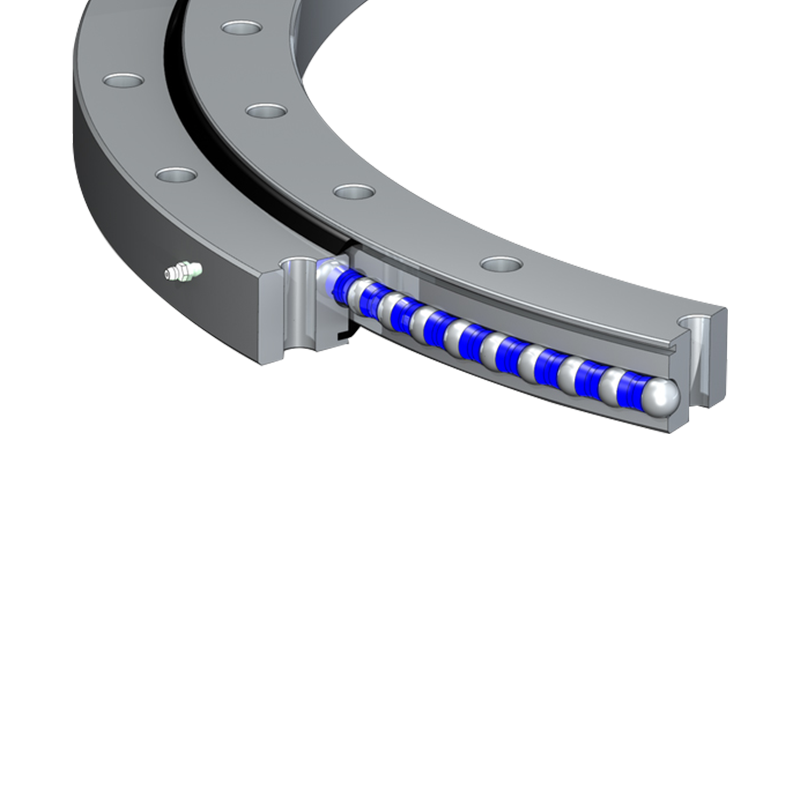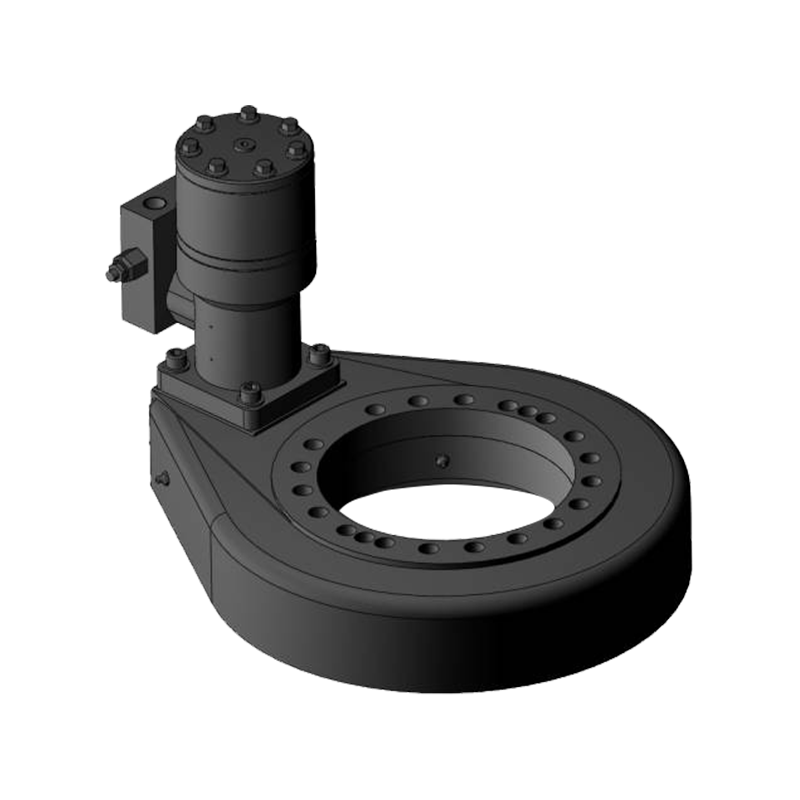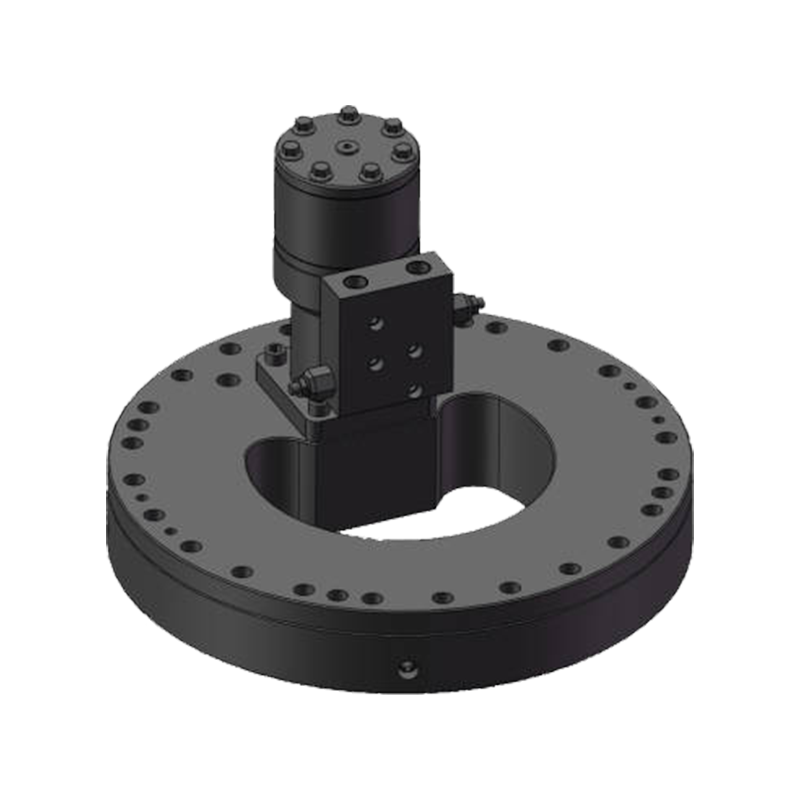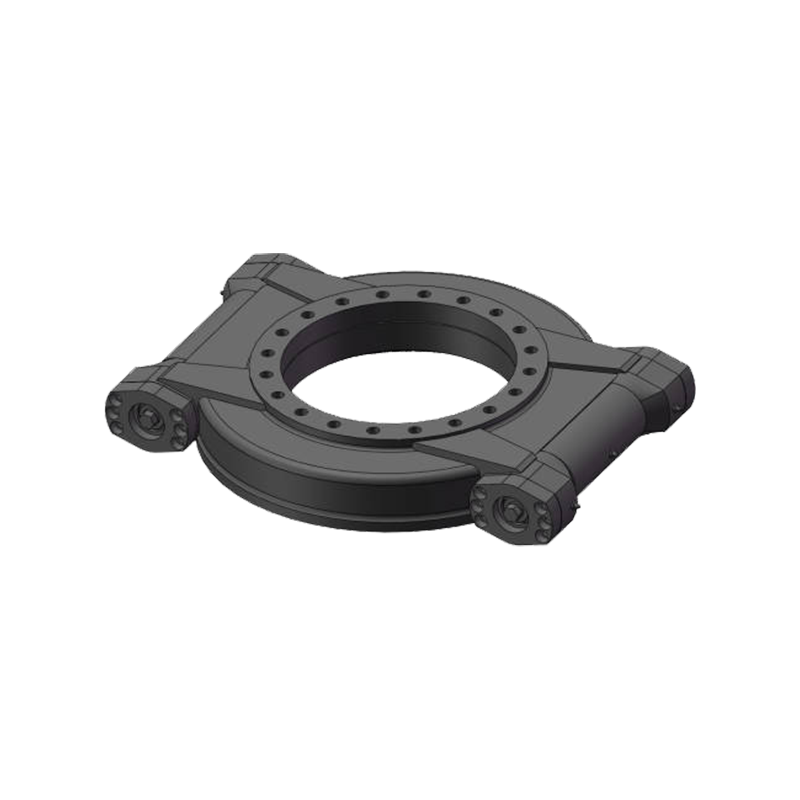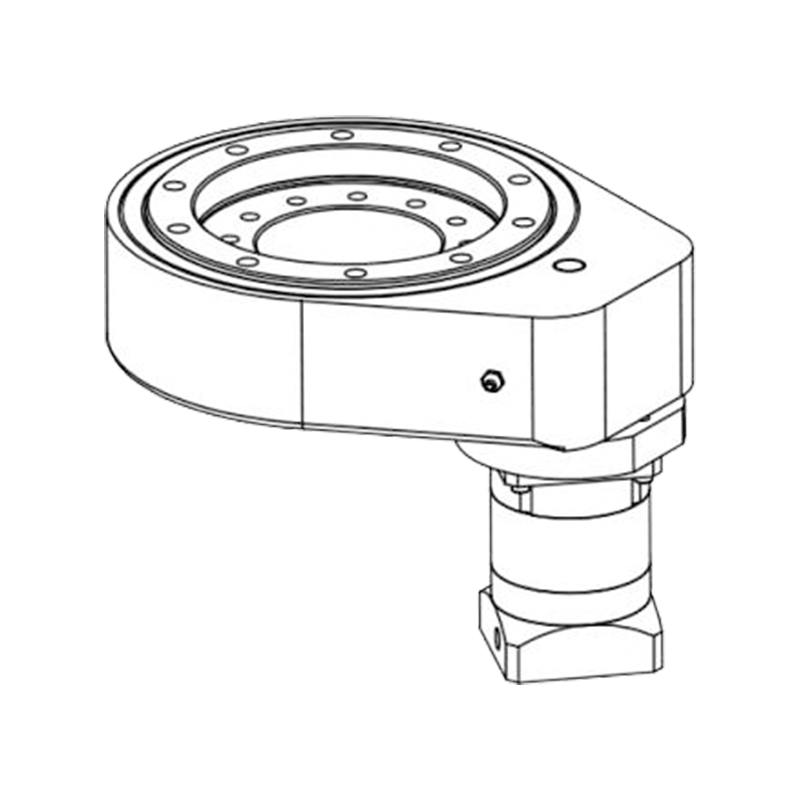Slewing Rings in Heavy Industry: Design Principles and Operational Demands
 2025.08.01
2025.08.01
 Industry news
Industry news
Slewing rings represent a critical class of large-diameter rotational bearings that enable controlled movement under extreme loads in heavy machinery applications. These specialized components combine radial, axial, and moment load capacity in single compact assemblies, making them indispensable for construction, mining, wind energy, and material handling equipment.
Content
Fundamental Design Configurations
Primary Structural Types
-
Single-row four-point contact ball (most common industrial configuration)
-
Double-row ball (enhanced load distribution)
-
Crossed roller (superior moment load capacity)
-
Three-row roller (maximum load-bearing capability)
Critical Design Elements
-
Raceway geometry (Gothic arch vs. circular profile)
-
Gear integration (external/internal tooth configurations)
-
Mounting provisions (bolt patterns, pilot diameters)
-
Sealing systems (multi-labyrinth, V-ring, or composite seals)
Material Science Considerations
Standard Metallurgy
-
Raceway materials: 42CrMo4 (hardened to 58-62 HRC)
-
Rolling elements: 100Cr6 bearing steel (60-64 HRC)
-
Structural components: S355J2G3 carbon steel
Specialized Alloys
-
Corrosion-resistant variants: 1.4418 stainless steel
-
Low-temperature applications: 34CrNiMo6 with special heat treatment
-
High-temperature versions: Case-hardened 32CrMoV12-28
Load Capacity Engineering
Static Load Ratings
-
Basic static capacity (C₀): 500 kN to 50,000 kN range
-
Moment load capacity (M): 50 kNm to 5,000 kNm
-
Combined load calculations (ISO 76/281 standards)
Dynamic Performance
-
Fatigue life estimation (L10 life calculations)
-
Lubrication requirements (grease selection based on DN value)
-
Speed limitations (typically <50 rpm for large diameters)
Industrial Application Breakdown
Construction Machinery
-
Crawler cranes: 3,000-5,000mm diameter units
-
Tower cranes: Moment load optimized designs
-
Concrete pumps: Compact high-stiffness variants
Energy Sector Applications
-
Wind turbine pitch/yaw systems: 1,500-4,000mm sizes
-
Solar tracker systems: Cost-optimized designs
-
Hydropower equipment: Corrosion-resistant versions
Material Handling Systems
-
Stacker-reclaimers: 4,000-8,000mm diameters
-
Ship loaders: Saltwater environment packages
-
Mining shovels: Extreme impact-resistant designs
Manufacturing Processes
Precision Machining
-
Raceway grinding (form accuracy <0.01mm)
-
Gear tooth generation (DIN 3962/ISO 1328 standards)
-
Mounting surface finishing (flatness <0.05mm/m)
Heat Treatment
-
Case hardening (2-5mm case depth)
-
Induction hardening (localized raceway treatment)
-
Stress relieving (vibration aging techniques)
Quality Verification
-
NDT inspection (UT, MPI, penetrant testing)
-
Coordinate measurement (gear profile verification)
-
Running tests (full-scale load testing)
Maintenance & Service Considerations
Lubrication Strategies
-
Centralized grease systems (automatic replenishment)
-
Oil bath lubrication (high-speed applications)
-
Specialty lubricants (food-grade, extreme pressure)
Wear Monitoring
-
Vibration analysis (bearing condition tracking)
-
Grease sampling (wear particle analysis)
-
Backlash measurement (gear wear indication)
Emerging Technological Developments
Advanced Materials
-
Hybrid ceramic bearings (silicon nitride rollers)
-
Surface engineering (DLC coatings, laser texturing)
-
Composite components (carbon fiber support rings)
Smart Bearing Systems
-
Embedded sensors (strain, temperature, vibration)
-
Wireless condition monitoring (IoT integration)
-
Predictive maintenance algorithms
Manufacturing Innovations
-
Additive repair techniques (laser cladding of raceways)
-
Digital twin simulation (load distribution optimization)
-
Automated assembly systems
Selection & Specification Guidelines
Design Parameter Checklist
-
Load case analysis (worst-case scenario evaluation)
-
Environmental factors (temperature, contamination)
-
Movement profile (oscillating vs. continuous rotation)
-
Service life requirements (maintenance accessibility)
Cost Optimization Approaches
-
Standard vs. custom designs (lead time tradeoffs)
-
Material selection (performance vs. cost balance)
-
Sealing alternatives (operating condition matching)
Conclusion
Industrial slewing rings continue to evolve as essential components in heavy machinery, with modern designs pushing the boundaries of load capacity, durability, and intelligent monitoring capabilities. Proper selection and maintenance of these critical components directly impact equipment uptime and total cost of ownership. As digitalization transforms industrial equipment, slewing ring technology is adapting with embedded sensors and advanced materials to meet the demands of increasingly automated and data-driven operations. Future developments will likely focus on extended service intervals through improved surface engineering and self-monitoring capabilities, further solidifying their role as fundamental enablers of heavy industrial motion.



